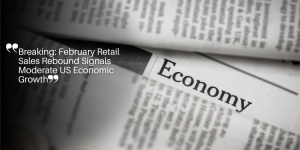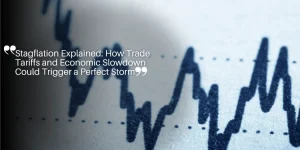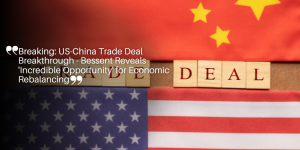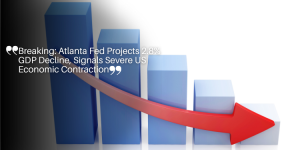US Economic Recovery Faces Crossroads: Trade Wars and Spending Cuts Cast Shadow Over 2025 Growth
📈 Current Economic Recovery Status
The U.S. economy is showing signs of recovery after the cold months of January and February.
The service sector, which includes a broad range of businesses like banks, retailers, and healthcare providers 🏦, recorded a notable uptick in March.
According to the S&P Global survey, the service sector gauge spiked to 53.5, a three-month high. 📊
This increase is a promising indicator of growth and suggests that service-oriented businesses are gaining positive momentum.
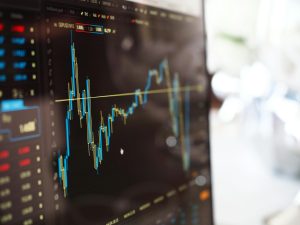
🌱 Signs of Post-Winter Growth
After enduring the winter slowdown, the economy has begun to perk up. 📈
The preliminary readings from February and March indicate that service-oriented businesses are starting to stabilize and even thrive.
The growth in the service sector is significant, as this segment employs a majority of Americans and is relatively insulated from international trade concerns.
The primary expense for these businesses is labor, which shields them from the direct impacts of tariffs and trade policies that have disrupted other sectors. 👷♂️
📊 Analyzing the Economic Indicators
The S&P surveys are notable for providing early insights into the economic performance of various sectors.
The recent rise in the service sector gauge is encouraging, but business leaders remain cautious. 🤔
There is a palpable sense of uncertainty in the air, with apprehensions centered around the potential ramifications of government spending cuts and ongoing trade wars. ⚖️
Despite the visible recovery signs, companies are aware that challenges may still lie ahead.
🔮 Implications for the Near Future
The economic recovery appears to be on a delicate footing. While the service sector shows robust growth, underlying concerns about federal policies continue to loom.
Business leaders are particularly wary of the implications that these policies might have on long-term economic stability. ⚠️
Although the current momentum is positive, the future trajectory of the economy remains intertwined with the decisions and policies emanating from Washington. 🏛️
As we move forward, it will be important to keep an eye on these economic indicators and the subsequent reactions of business leaders.
The resilience of the markets suggests a capacity to adapt, but the true test will be the sustainability of this recovery amidst the prevailing policy uncertainties.
📉 Business Confidence and Future Outlook
⚠️ Waning Business Optimism
As the U.S. economy continues to thaw from the harsh winter months, a worrying trend has emerged: business confidence is experiencing a substantial downturn.
According to S&P Global, business expectations for the year ahead have fallen to their second-lowest level since October 2022. 📉
This marked decline in optimism contrasts sharply with the buoyant mood that characterized the start of the year.
🚧 Factors Dampening Business Sentiment
| Factor | Description |
|---|---|
| 💵 Federal Spending Cuts | Potential reductions in federal spending have left businesses uncertain about future government contracts and investments, which are crucial revenue streams for many companies. |
| 📦 Tariff Impacts | President Trump’s trade policies, including an array of tariffs, are creating significant uncertainty. Concerns about higher costs of goods and a potential decline in customer demand are causing businesses to reassess their growth strategies. |
📊 Market Reactions
Despite the dip in business confidence, the markets have shown resilience.
The Dow Jones Industrial Average and the S&P 500 have both recently experienced significant gains. 📈
This reaction from MarketWatch signifies that while business leaders are preparing for potential challenges, investors remain cautiously optimistic about the immediate economic outlook. 💰
🏭 Service Sector vs. Manufacturing
Interestingly, the impact of these concerns varies across different sectors.
✅ Service Sector: With the service sector largely insulated from direct trade concerns, businesses such as banks, retailers, and healthcare providers continue to drive economic growth. The service-sector index rose to a three-month high of 53.5, indicating positive momentum.
⚠️ Manufacturing Sector: On the other hand, the manufacturing sector is feeling the squeeze. The manufacturing index dropped to 49.8, a figure suggesting contraction. The divergent impacts of tariffs are more pronounced here. While some segments like steel production might benefit, many other manufacturers are grappling with higher costs and potential drops in demand.
🔍 Forward Outlook
The current economic recovery is undoubtedly at a critical juncture. Business leaders across sectors are recalibrating their expectations for 2025.
The trajectory of the economy is heavily influenced by the extent and scope of President Trump’s policies. 🏛️
As companies navigate through these uncertain times, the resilience in the stock market provides a glimmer of hope, reflecting underlying faith in the broader economic fundamentals. 📈
As we delve deeper into sector-specific impacts, it becomes crucial to understand how each industry navigates these turbulent times and the broader implications of trade policies on their operations.
⚖️ Sector-Specific Impact Analysis
📊 Service Sector Resilience
The service sector, a significant part of the U.S. economy that employs the majority of Americans, continues to exhibit strong resilience amid economic uncertainties.
According to an S&P Global survey, the service sector gauge rose to a three-month high of 53.5, signaling growth. 📈
Service-oriented businesses, which include banks, retailers, and healthcare providers, are less affected by trade issues since their primary expense is labor—positions like waiters, doctors, hairdressers, and cashiers. 👩⚕️
This insulation from trade concerns has allowed the sector to maintain momentum even as other parts of the economy face challenges.
🏭 Manufacturing Sector Contraction
By contrast, the manufacturing sector is experiencing more significant difficulties.
The manufacturing sector index dropped to 49.8, indicating contraction. 📉
This sector is heavily impacted by trade policies and tariffs, reflecting a decline from the positive sentiment at the beginning of the year.
While steel producers and similar industries might benefit from protectionist policies, most manufacturers face higher costs and potentially reduced demand for their products due to steep tariffs. 🔩
Such divergent impacts highlight the complexity of the manufacturing sector’s response to current economic policies.
🚨 Trade War Implications
⏳ Business Planning Uncertainty
President Trump’s trade policies have resulted in significant uncertainty in business planning across various sectors.
Companies are grappling with the impact of tariffs and trade wars, making it difficult to formulate long-term strategies. 📜
This uncertainty is causing a ripple effect, as businesses reconsider their investments and expansion plans, leading to overall cautious business behavior.
🚀 Economic Crossroads and Future Trajectory
The U.S. economy currently finds itself at a critical juncture.
The direction it takes from here will depend significantly on the scope of President Trump’s policies, particularly his approach to trade.
Despite challenges, financial markets have shown resilience, suggesting investor confidence in long-term growth. 💰
As we move forward, understanding the interplay between policy decisions and their economic impacts will be vital.
The path the U.S. economy takes will be heavily influenced by the resolution of these trade issues and the broader policy landscape, shaping the environment in which businesses will operate. 🏛️
📈 Policy Influence on Economic Direction
The economic landscape in the U.S. has been significantly shaped by the policies implemented by President Trump, especially his trade measures. While the service sector has shown a degree of resilience, the manufacturing sector is not faring as well.
The recent S&P Global survey data underscores this dichotomy, highlighting the differing impacts that these policies have on various segments of the economy.
🏦 Service Sector Resilience
Service-oriented businesses, which include banks, retailers, and healthcare providers, make up a large portion of the U.S. economy.
These businesses are largely insulated from trade issues since their major expenses are labor-related.
This relative insulation has allowed the service sector to maintain momentum, contributing to an S&P service-sector gauge that climbed to a three-month high of 53.5 in March.
This growth suggests that, for now, the domestic service industry remains on a positive trajectory despite external uncertainties.
🏭 Manufacturing Sector Challenges
In contrast, the manufacturing sector has not been as fortunate. Preliminary readings reveal a drop in the manufacturing index to 49.8, indicating contraction.
Manufacturers are split on the impact of tariffs: while industries like steel production might benefit, many others face increased costs and potentially lower demand for their products.
This has created a cautious environment among business leaders, who are now revising their expectations for 2025 downward.
📊 Market Resilience Amid Uncertainty
Despite the evident challenges, the financial markets have shown surprising resilience.
Major stock market indices, such as the Dow Jones Industrial Average and the S&P 500, have observed significant gains, reflecting investor confidence in the underlying economic fundamentals.
This resilience suggests that investors are betting on the economy’s ability to overcome short-term challenges, banking on long-term growth prospects.
🔄 Recalibrating Expectations for 2025
However, the optimism that was prevalent at the start of the year has significantly waned.
The trade policies and potential federal spending cuts have led to increased caution among business leaders.
Companies are now more wary of planning for the future, given the unpredictable nature of the current policy environment.
This recalibration of expectations is essential for businesses to navigate the uncertainties ahead.
As we move forward, understanding the interplay between policy decisions and their economic impacts will be vital.
The path the U.S. economy takes will be heavily influenced by the resolution of these trade issues and the broader policy landscape, shaping the environment in which businesses will operate. 🌍


